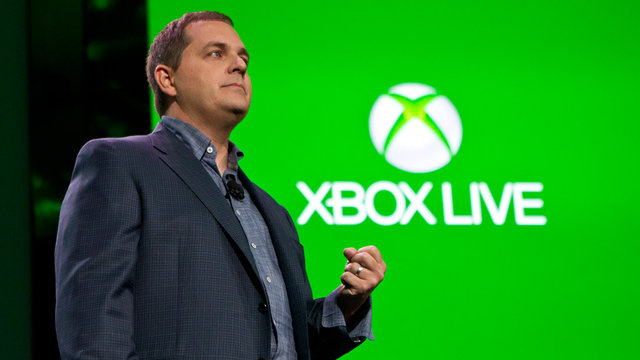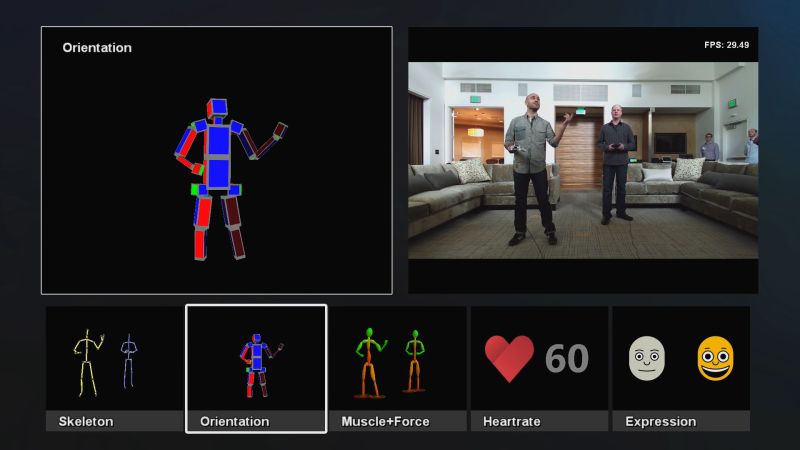Xbox One: A Gaming Console for Non-Gamers?
 New Xbox One is no longer a games console, to the dismay of many avid gamers over at the gaming portal IGN – but perhaps to a sigh of relief from moms and dads everywhere.
New Xbox One is no longer a games console, to the dismay of many avid gamers over at the gaming portal IGN – but perhaps to a sigh of relief from moms and dads everywhere.
In a recent media event extensively covered by IGN, one of the leading gaming portals worldwide, Microsoft unveiled their newest brainchild: a successor to the legendary Xbox 360, a console and entertainment system that put gaming into a modern family’s home back in 2005. Since then, the industry itself flourished, with consoles being often touted both as the salvation of the gaming as a whole and a force that made the industry stagnant in many ways. Consider this: prior to Xbox360 and its rivalling Playstation 3, consoles lived for about a year or two. Every few years old consoles became dated and passé, while new ones promised heavenly gaming. And, of course, new consoles meant new graphics, better games and more money for console manufacturers and software developers. Current „gen„, or „generation” of hardware and software used in gaming consoles debuted back in 2005 and has not changed at all since – with the exception of Wii U, nothing really new or significant had appeared on the gaming console market since that time.

The stagnant market
Part of the blame for this slowing of the progress lies with Microsoft. With 360, giant from Redmond did what they had always done: they shaped the market according to their vision of how entertainment and gaming should look like and assumed control over both supply and demand. On the side of supply it meant forcing customers to use rather unsophisticated (even by the standards back then) computing hardware locked in a proprietary box that could only be manipulated in any way by a certified technician – much like a TV set or a washing machine. However, unlike ordinary household appliances, consoles are still basically a very well designed computer at their core. That meant that by fusing the box shut, Microsoft (and Sony) forced innovation and creativity in developing games into a specific direction: that of highest possible economy of computing power, nice-looking (but not to a closer scrutiny) graphics that were reasonably easy on the eye and a very tightly controlled online environment for gaming over the Internet. Some may consider it to be a good thing: stricter guidelines and conformity to uniform hardware meant developers had to program everything for a single type of computer, with exact same specifications, rather than what is typically done when programming for PCs, where you plan for every eventuality, and there’s a myriad of components and configurations thereof to plan for.
But whatever your outlook on the issue, for the last 8 years most of the games produced were specifically designed to fit either Microsoft’s or Sony’s console best, meaning that advances in computer power, hardware and software were by and large meaningless from the gaming industry’s standpoint – and that was where the biggest money was (and still is) at.

Enter Xbox One and Playstation 4, both next-gen platforms. According to the reveal, Xbox One is not even strictly a gaming device anymore. In fact, the whole event was rather far removed from the gaming itself: among the speakers at the unveiling there were many CEOs and directors from different branches of Microsoft, as well as choice top brass from EA Sports, but the highlight of the evening was a televised visit from… film guru Steven Spielberg. In the overall vein of the event, Spielberg was there not to promote any gaming-related scenarios or productions, but to push a game spin-off, Halo TV series.

The phenomenon of Halo
Halo is one of the major franchises for Xbox 360 – and now, for Xbox One. In a nutshell, Halo is a sci-fi shooter set in the distant future, where Earth’s colonies battle each other and various alien races. Distinctive artistic style and very intricate plots form the backbone of seven titles (with the seventh called, for various reasons, Halo 4), causing many critics to compare Halo fans to Star Wars devotees. The most important feature of this traditionally Xbox 360-bound franchise is its very competitive multiplayer. This is what made the game so popular among the Xbox 360 players: the ability to play and compete with others over the Internet. While far from the online capabilities offered by PC-only titles (especially MMO games, i.e. the games that take place entirely online, and only with other players), Halo made Xbox 360 into a significant player on the online entertainment market, where previously consoles were disregarded as casual platforms only. The success of Xbox’s online feature is so great that its proprietary online system, called Xbox Live, is going to be implemented again in Xbox One.

Xbox Live is an online connectivity and social service directly tuned to the gamer’s profile and his or her activity. With it, players can buy games, share progress and chat up other like-minded aficionados. Live is also an online subscription service that makes some content – like Arcade games – available exclusively to its users.
Family entertainment with gaming capabilities
The exclusivity of Xbox One is now of a very different nature, though. Where previously the Microsoft console’s main functions included gaming – with watching online TV (e.g. Netflix) a close second – new console is marketed, labelled and even designed to be a wholly family-oriented product. One resembles a modest DVD player: it’s black and grey, it’s very geometrically unassuming and classic-looking in a way that is most reminiscent of a hi-fi system or a disc player. This is the biggest hint that One will, in fact, be first and foremost used as a set-top box to decode HD signal from your digital TV tuner. This means that it’s going to allow watching online TV, DVR your favourite shows and show various special features (like overlaying subtitles or channel guide) on-screen, as well as play back Blu-ray disks (as it’s also got a Blu-ray player built in).

Its online services will mostly be used to browse the Internet like on a PC, but in a more friendly way, involving its controller, any tablet or even a smartphone. Interestingly enough, Xbox One joins the „second screen” craze with its own solution. So instead of a mishmash of various remotes you can turn your phone or a tablet into a device with its own screen – to control what’s happening on a device with a bigger screen, i.e. your TV. But it’s ok if you don’t own a smartphone or a tablet yet: since Xbox One is actually a very sophisticated computer, it’s able to recognize your voice commands. One of the announced features is Siri-like voice control: you can change the channels, browse the Net and turn TV on much like captain Kirk or Picard would with their computers in Star Trek. What a time to be alive, indeed…

So why buy a not-so-cheap (price point has not been set yet, but it’s rumored to be around USD 300-400 apiece at the very least) device to turn your TV into a bit smarter version of itself – if not even already as smart? Apparently, it’s because of its Windows’ roots. It’s going to be as easy to navigate and use as a Windows 8 tablet because at its heart (the non-gaming one, at least) lies Windows kernel (kernel is a basic set of programs that make up an operating system). Combined with pretty nice tech specs – of which we still don’t know as much as we would like to – this promises to be a very responsive product. Add in cloud services – because it’s a buzzword, and because it actually does make life easier – and you got yourself a veritable smorgasbord of Internet TV, streaming video, chatting via Skype, watching Blu-ray flicks and DVR-ing your fave TV shows in a nice, adult-looking package – just like an advanced set-top box.
Not a set-top box
But here’s the thing: at its core, Xbox One is not a set-top box. It’s designed to be a gaming console from the ground up. It’s got an 8-core CPU – on par with all modern gaming PCs. Its 8 GB of RAM provide as much memory as most gaming laptops. The only technical detail that may be slightly below par compared to laptops and desktops is its hard drive – it’s only 500 GB, which further hints at the cloud implementations. Cloud computing in this particular case would mean storing your whole movies, games, documents and savegames online, rather than within your One’s hard drive.
According to the unveiling presentation, Xbox One online services will be provided by 300 000 servers compared to 15 000 that are being used now. Even so, it’s not yet clear what would that increase in server power be used for. That is, unless Xbox Live will also provide an OnLive type of thing, where you play your games entirely online, in that you don’t install anything whatsoever anywhere and play on a remote computer server (as opposed to using the processing power of your laptop or a desktop). Otherwise, the device’s cloud capabilities will soon be forgotten as a mere gimmick.
One seems to be a bit all over the place, considering the ambiguous technical specs and the way it is marketed right now. It’s quite likely that its power is going to be wasted by non-gaming families, who might buy Xbox One simply for its TV-enhancing features and to save on additional DVR solutions. It comes with a Kinect periphery, which doubles as a Full HD webcam (which is already more than most Smart TVs can offer) but is originally used as a hands-off controller. Kinect allows you to use gestures and body movements to control what is going on on your TV. In case of games, it is indeed a proven solution for weight loss, fitness and recreation sports games. In case of Smart TV, it’s simply a way to control your TV with your hands – you swipe at it, and the TV screen responds by „reading” your gesture via Kinect camera. Sounds spooky? It certainly is: your TV will, in effect, know and see whatever you’re doing in front of it.

Whatever Microsoft are planning to do, it’s too early to tell if Xbox One will be as defining (or limiting, depending on your point of view) a device as it has been for gamers this past decade. Already the company announced that it will provide more details during the coming E3 show devoted to games and electronics. But what is already certain, is that it’s no longer a gaming console: it’s a family entertainment system, designed to provide fun for the whole family, rather than just for some of its more nerdy members.
VOCABULARY
event – wydarzenie
extensively – obszernie
to unveil – odsłonić
brainchild – dziecię, pomysł
successor – następca
entertainment – rozrywka
to flourish -kwitnąć
to tout sth as – okrzyknąc coś mianem czegoś
salvation – ocalenie
force – siła
stagnant – w stagnacji, znieruchomiały
to consider – rozważyć
prior to sth – przed czymś
passé – niemodny
heavenly – boski
manufacturer – producent
software developer – programista, twórca oprogramowania
gen – pokolenie
with the exception of sth – za wyjątkiem czegoś
significant – znaczący
blame lies with sb – wina leży po stronie kogoś
according to – zgodnie z, według
to assume control over sth – przejąć nad czymś kontrolę
supply – podaż
demand – popyt
unsophisticated – niezbyt skomplikowany/wyrafinowany
proprietary – własny (firmy), autorski
certified – certyfikowany
technician – technik, specjalista
TV set – odbiornik TV
ordinary – zwyczajny
household appliance – sprzęt AGD
core – rdzeń, istota
to fuse sth shut – zamknąć coś na amen/na głucho
computing power – moc obliczeniowa
closer scrutiny – bliższe przyjrzenie się
reasonably – rozsądnie, całkiem
easy on the eye – cieszący wzrok
tightly – ciasno, mocno
strict – surowy, ostry
guidelines – przepisy, wytyczne
conformity to sth – dostosowanie się do czegoś (np. norm)
uniform – jednakowy
exact same – dokładnie taki sam
specifications (specs) – dane techniczne, specyfikacje
eventuality – ewentualność, przypadek
myriad – miriady, ogrom
thereof – tego, z tego
outlook – tu: pogląd
to fit – pasować
advances – postępy, zaawansowanie
by and large – na dobrą sprawę, ogólnie rzecz biorąc
standpoint – punkt widzenia
enter X… – oto X…
reveal – odsłona
device – urządzenie
far removed from sth – jak najdalszy od czegoś
CEO (chief executive officer) – dyrektor naczelny
branch – gałąź
top brass – wierchuszka, dyrektorzy spółki
highlight – główna atrakcja, gwóźdź programu
in (the) vein of sth – w podobny deseń, podobnie do czegoś
to push – domagać się, żądać
spin-off – produkt powiązany (np. film o postaci drugoplanowej z innego filmu)
franchise – franczyza, linia/typ produktu
in a nutshell – krótko mówiąc
shooter – strzelanina, strzelanka (gra)
to battle – wojować
various – rozmaity
alien – obcy
distinctive – charakterystyczny
intricate – zawiły
plot – fabuła
backbone – istota (czegoś), trzon (czegoś)
to compare – porównać
devotee – miłośnik
feature – cecha
bound – związany, powiązany
competitive – konkurencyjny, nastawiony na rywalizację
capability – zdolność, funkcja
especially – zwłaszcza
MMO (Massively Multiplayer Online) game – gra online typu MMO (w której bierze udział jednocześnie bardzo wielu graczy)
entirely – całkiem
to disregard sth as sth – zignorować znaczenie czegoś jako coś
connectivity – łączenie się, łączność
tuned – dopasowany, powiązany
activity – czynność, działalność
progress – postęp
to chat sb up – zagadać do kogoś
like-minded – podobnie myślący
aficionado – fan, zwolennik
subscription – abonament
content – zawartość
exclusively – wyłącznie
to include – zawierać
a close second – drugi w kolejce
labelled – opatrzony metką, tu: sprzedawany/promowany (jako)
to resemble – przypominać
modest – skromny, prosty
unassuming – bezpretensjonalny
reminiscent of sth – przypominający coś
hint – wskazówka
first and foremost – przede wszystkim
set-top box – dekoder TV, tuner TV
to decode – dekodować
HD (High Definition) – wysokiej rozdzielczości
digital – cyfrowy
to DVR sth – nagrać coś (np. film) za pośrednictwem cyfrowej nagrywarki wideo (DVR)
to overlay – nanosić na coś, nakładać
subtitle – napis (w filmie)
channel guide – program TV
to play back – odtwarzać
built in – wbudowany
to browse – przeglądać
controller – kontroler (pad)
craze – szał
mishmash – miszmasz, chaotyczna mieszanka
remote (control) – pilot (zdalnego sterowania)
to turn sth into sth – zmienić coś w coś
to own – posiadać
sophisticated – skomplikowany, wyrafinowany
to recognize – rozpoznać
to announce – ogłosić
price point – pułap/poziom cenowy
rumored – podobno, chodzą słuchy
apiece – od sztuki, za sztukę
roots – korzenie
kernel – jądro (systemu operacyjnego)
to make up sth – składać się na coś
combined with – w połączeniu z
responsive – responsywny, szybko reagujący
cloud services – usługi typu „chmury” (zdalnego przechowywania i przetwarzania danych)
buzzword – modne słówko
veritable – prawdziwy, istny
smorgasbord – róg obfitości, ogrom opcji (do wyboru)
to stream – nadawać strumieniowo
via – poprzez
flick – film (pot.)
fave – ulubiony (pot.)
adult – dorosły
from the ground up – od zera
CPU (central processing unit) – procesor
on par with sth – na równi z czymś
RAM (random access memory) – pamięć RAM
detail – szczegół
slightly – odrobinę
desktop – komputer stacjonarny
hard drive – dysk twardy
to store – przechowywać
savegame – zapis stanu gry
to provide – dostarczać
whatsoever – cokolwiek, jakkolwiek
remote – zdalny, odległy
as opposed to – w przeciwieństwie do
mere – zaledwie, ledwo
gimmick – tani chwyt, błyskotka
to be all over the place – nie móc się na coś zdecydować, nie opowiedzieć się za czymś konkretnie
ambiguous – dwuznaczny
to market – promować, sprzedawać
to waste – marnować
to enhance – ulepszyć
additional – dodatkowy
periphery – urządzenie peryferyjne
to double as sth – służyć również jako/do czegoś
hands-off – tu: bez użycia rąk
gesture – gest
proven – udowodniony, sprawdzony
weight loss – utrata wagi
to swipe – przeciągnąć
to respond – odpowiedzieć
spooky – straszny
in effect – w istocie rzeczy
defining – przełomowy (moment), stanowiący uosobienie czegoś (produkt)
depending on – w zależności od
nerdy – nerdziasty, związany z kulturą nerdów
-by Prochor Aniszczuk







